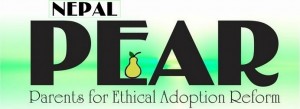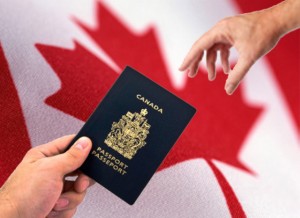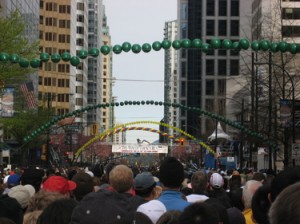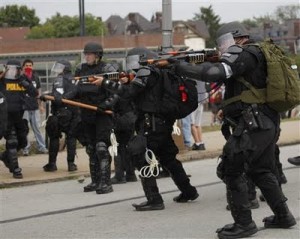Nepal adoption suspension riles Canadians

Take our FREE Online Assessment Today!
Socialize with Abrams & Krochak
Canadian ePassports to launch in 2012

Passport Canada plans to launch an ePassport in 2012, and in the meantime it wants to hear Canadians’ thoughts on the issue including revised fees.
The new passport will be little changed in appearance but will contain an electronic chip encoded with the bearer’s name, gender, and date and place of birth, as well as a digital portrait of the traveller’s face.
“The use of ePassports will allow Canada to follow international standards in the field of passport security to protect our borders and maintain the ease of international travel that Canadians currently enjoy,” Passport Canada said in a release.
With the launch of the new passport, Canadians will also be able to choose whether they want a passport valid for 10 years or for the current five-year period. Along with the changes will come new fees a development that requires consultation with Canadians, under the User Fees Act, according to the agency.
Canadians are asked to fill out an online questionnaire on Passport Canada’s website by May 7. The comments will be considered in the development of the new passport and its fees.
Take our FREE Online Assessment Today!
Socialize with Abrams & Krochak
March with no snow first on record

There has never been a March in history when there haven’t been any flakes of snow. Until now.
“There no snow in downtown this March – not even a trace amount recorded,” said David Phillips, senior climatologist at Environment Canada, since record keeping began in 1845. “It’s really astounding!”
This lack of snow beats the previous record of 1898 when trace amounts of snow – less than 0.2 centimetres – were seen downtown at the University of Toronto downtown campus. Normally, March in Toronto means an average of 22 centimetres of snow spread over nine to 10 days.
What makes this particular winter even more astounding, says Phillips, is a snowless November and March. “It seems like winter has been confined to three months instead of the normal six months,” he said, adding that it has snowed only between Dec.1 and Feb. 27 so far.
“Winter came in like a lamb, and went out like a lamb,” Phillips said. “We really didn’t see any lion-like weather.”
There is a chance that some more records will be broken. Toronto has only seen 46.2 centimetres of snow this season compared to the existing record of 47.1 centimetres in the winter of 1952 to 1953. On average, Toronto gets over 127.1 centimetres of snow every year.
This pattern of snowlessness has been echoed across the province. “The snowiest country in the world has got almost no snow in comparison,” Phillips said.
The record breaking pattern is expected to continue into the long weekend. Environment Canada is predicting 23 degrees Celsius on Friday, which would beat the current warmest temperate for April 2 set in 1967 at 20.6 degrees.
“We’ve got many indignant people telling us its to early for an April fool’s day joke, but it really isn’t,” Phillips said. “It’s going to be a spectacular summer-like weekend.”
Take our FREE Online Assessment Today!
Socialize with Abrams & Krochak
Small army to protect Toronto during G20 summit
Police forces have entered into an alliance to deal with the threat of violent protest at Toronto’s G20 summit with as many as 10,000 uniformed officers and 1,000 private security guards teaming up to protect world leaders.
Federal contract tenders obtained by The Globe indicate a small army will descend on Canada’s largest city this June, exceeding the estimated 6,000-police-officer presence at Vancouver’s 2010 Olympics ![[]](http://images.intellitxt.com/ast/adTypes/mag-glass_10x10.gif) .
.
The police security will come at a cost of hundreds of millions of dollars, although police officials would not confirm deployment numbers. Yet federal contract tenders posted online indicate how things are shaping up.
“For the G8 Summit [in Deerhurst, Ont.] the RCMP/OPP will require approximately 4,000 personnel with duty-related belongings to be transported at different dates, times and locations,” reads a contract tendered for shuttle buses. “For the G20 Summit, the RCMP will require approximately 5,600 personnel with duty-related belongings to be transported at different dates, times and locations.”
Spokeswoman RCMP Sergeant Michele Paradis said yesterday “we won’t ever give out the number,” of police assigned to the Group of 20 meetings, set to be held inside downtown’s Metro Convention Centre on the June 25 weekend, and the Group of Eight meeting that immediately precedes it at the Deerhurst Resort north of the city.
The RCMP-led Integrated Security Unit, to be buttressed by non-Mountie police officers seconded to the ISU, has the responsibility of protecting VIPs. And several specialized police units — SWAT teams, intelligence analysts, motorcade escorts — are expected to fly down from Deerhurst for the Toronto summit.
On top of all that, a new federal “letter of interest” seeks to hire a contractor who can provide airport-style security at various checkpoints.
“The contractor will be required to provide approximately 1,030 security screening personnel to perform pedestrian screening in designated areas,” the letter reads.
The tender doesn’t say where the guards will be stationed, but they are to be outfitted with “Magnetometers,” “walk-through metal detectors,” “X-Ray belt driven scanners” and “hand-held metal detectors.”
Sgt. Paradis, who handles communications for federal police, said “we are going to use private security, and this will be used to augment the security process.” Stressing she would not speak to numbers, she did add that no numbers are set in stone and that the force levels will vary depending on what circumstances and threat levels dictate.
In Pittsburgh, which hosted the G20 last September, 6,000 police and National Guard were called in the assist city police.
In June the overall ranks of security forces could even rival the estimated 15,000 dignitaries and journalists anticipated for the G8/G20 summits. The Toronto Police Service is expected to have much or most of its 5,500-member uniformed force on duty to protect the metropolis that weekend — officers were warned not to book any vacation months ago. “I cannot comment on TPS deployment beyond telling you that … all hands are expected to be on deck to police the entire city,” said City Councillor Adam Vaughan, a member of the police board.
And unspecified numbers of Canadian soldiers and spies will also work behind the scenes to help thousands of police safeguard the meetings. Meanwhile, world leaders like U.S. PresidentBarack Obama ![]() will also bring added layers of guards of their own.
will also bring added layers of guards of their own.
Publicly available contract tenders for police transport, private security, and communications systems are currently available on the merx.com website for those who search the term “G20.”
Take our FREE Online Assessment Today!
Socialize with Abrams & Krochak
Archives
- January 2024
- November 2023
- July 2023
- June 2023
- May 2023
- January 2023
- November 2022
- April 2022
- March 2022
- February 2022
- October 2021
- June 2021
- April 2021
- October 2020
- September 2020
- June 2020
- May 2020
- April 2020
- March 2020
- December 2019
- January 2019
- December 2018
- November 2018
- August 2018
- June 2018
- April 2018
- January 2018
- December 2017
- November 2017
- April 2017
- January 2017
- December 2016
- November 2016
- October 2016
- September 2016
- August 2016
- August 2015
- January 2015
- December 2014
- November 2014
- June 2014
- April 2014
- March 2014
- February 2014
- December 2013
- May 2013
- April 2013
- January 2013
- December 2012
- August 2012
- June 2012
- March 2012
- January 2012
- September 2011
- August 2011
- July 2011
- June 2011
- February 2011
- January 2011
- December 2010
- November 2010
- September 2010
- August 2010
- July 2010
- June 2010
- May 2010
- April 2010
- March 2010
- February 2010
- January 2010
- December 2009
- November 2009
- October 2009
- September 2009
- August 2009
- August 2008
- July 2008
- June 2008
- May 2008
- April 2008
- March 2008
- February 2008
- January 2008

